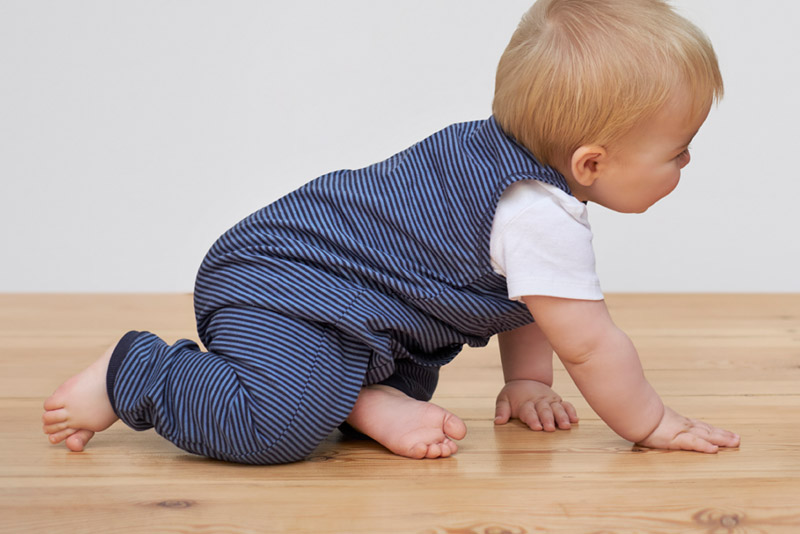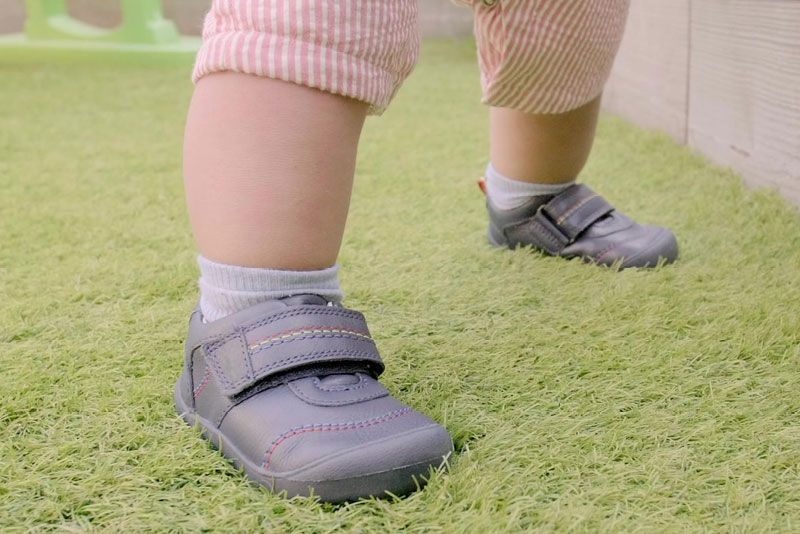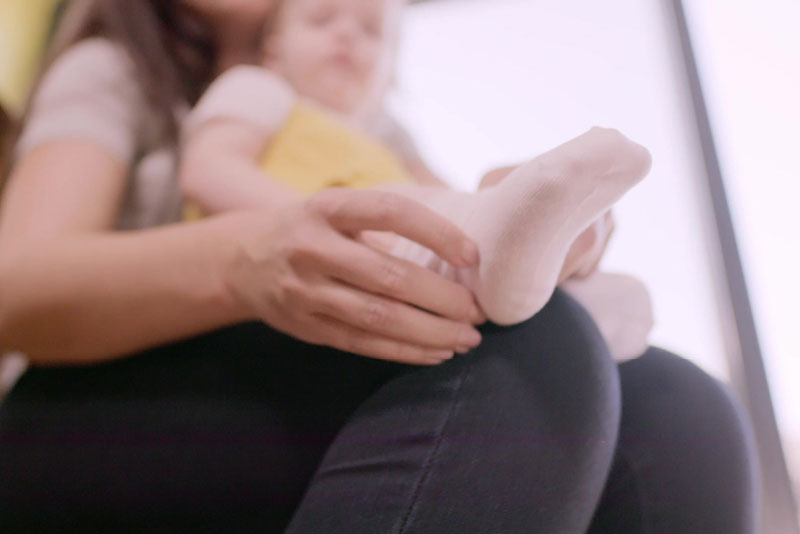
Adults in the UK spend millions of pounds a year attending podiatry clinics to try and put right problems that started in childhood, says podiatrist Karen Randell: “So keeping an eye on our children’s feet can pay great dividends in the future, by helping them grow up to be happy, healthy and active adults.”
So what can we do to give children’s precious little feet the best chance of that healthy future? Karen has six essential foot care tips to follow.
“Use simple soap and water, or whatever you generally use to bath them – you don’t need to use something different for feet,” says Karen. “Make sure the feet are dried really well, being gentle between the toes.

“If you’re not bathing them every day, draw a baby wipe through between the toes. For toddlers, you could also use a little powder as their feet tend to sweat more.”
There’s no hard-and-fast rule about how often you should cut children’s toenails – like adult nails, they all grow at varying rates, says Karen: “Unlike adult nails, they are quite soft, but you don’t want them to catch and tear. Cut them whenever they look as if they could catch or snag a blanket or babygrow, or if one nail is catching the flesh of another toe.
“Trim straight across the tip of the toe, leaving about a millimetre of nail free – don’t go down into the corners.”
“Babies lose a lot of heat from their feet because the ratio of the surface of the foot compared to the rest of their body is quite large, so make sure the feet and toes aren’t too cold,” says Karen.
For both babies and older children, Karen recommends investing in good quality socks made from natural materials – either 100 percent cotton or a 50-50 cotton-wool mix – so the feet don’t create too much heat, especially once they are in shoes. Clean socks should be worn every day.

“Socks should be soft and roomy at the toes to allow for normal development, with a little bit of elasticity so they stay on,” says Karen. “Make sure they haven’t shrunk in the wash and are pulling at the feet – the same goes for babygrows.”
At night-time, advises Karen: “Don’t tuck in a baby blanket so that the baby can’t move – they need freedom.”
For babies not on the move, Karen advises that pram shoes should be avoided: “It’s difficult to put a baby’s foot into a shoe, so pram shoes should only be worn for special occasions. With any booties, make sure they don’t constrict the ankles or cram the toes to allow for normal foot and toe motion and development.”
For more advice on what children should wear on their feet and at what stage, read our is my child ready for shoes? article.

“Make sure the skin is intact and healthy,” says Karen. “Look for anything that’s irritating your child and making them pay more attention to one area of their foot.
“Look in between toes to make sure there are no congealed patches where the skin looks moist and is peeling,” she says. “Look out for inflammation too – make sure a nail isn’t digging in causing a local infection. Check the soles of older children’s feet for patches that could be verrucas or other infections.”
If babies are in any kind of shoe – or even a babygrow – look for redness below the ankle bones and at the back of the heel. Once children are in more of a formed shoe, also check for redness, marks or bruises on toes. Check the shape of the toes when they are out of a shoe: “If they are drawn back or curled, they could be gripping to hold on to a shoe that’s too big or because they’ve been in wellington boots for too long.”
“Feet tend to be a bit sticky and smelly,” says Karen, “but if it’s an offensive smell, it could mean there’s a fungal infection.”
For any problem you identify, says Karen “If you’ve located it and tried to address it but, after two or three days it’s ongoing, that would be the time to seek medical advice.”
Other articles and videos in our first steps forward section tell you more about the amazing way children and their feet develop – and how you know when they are ready for shoes.
